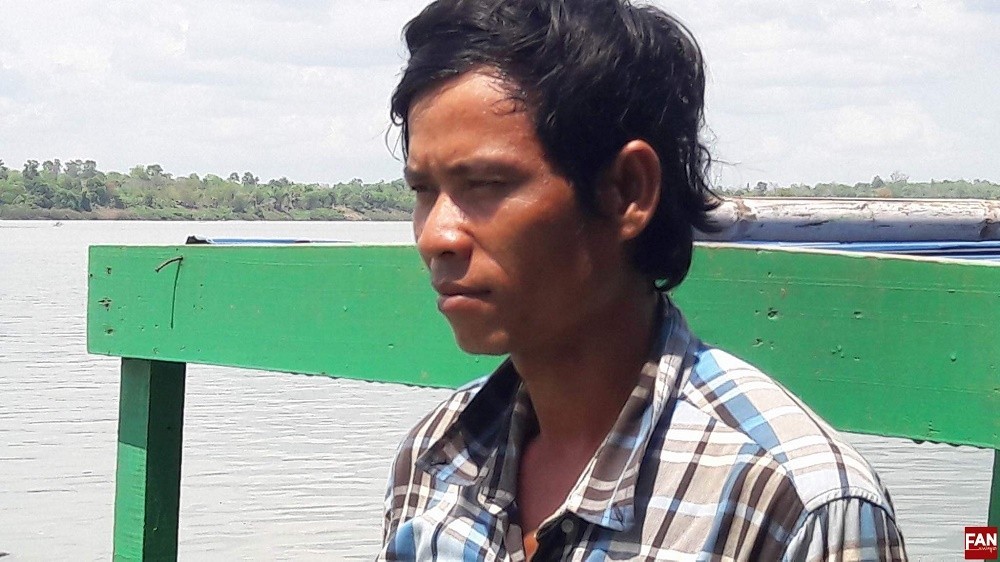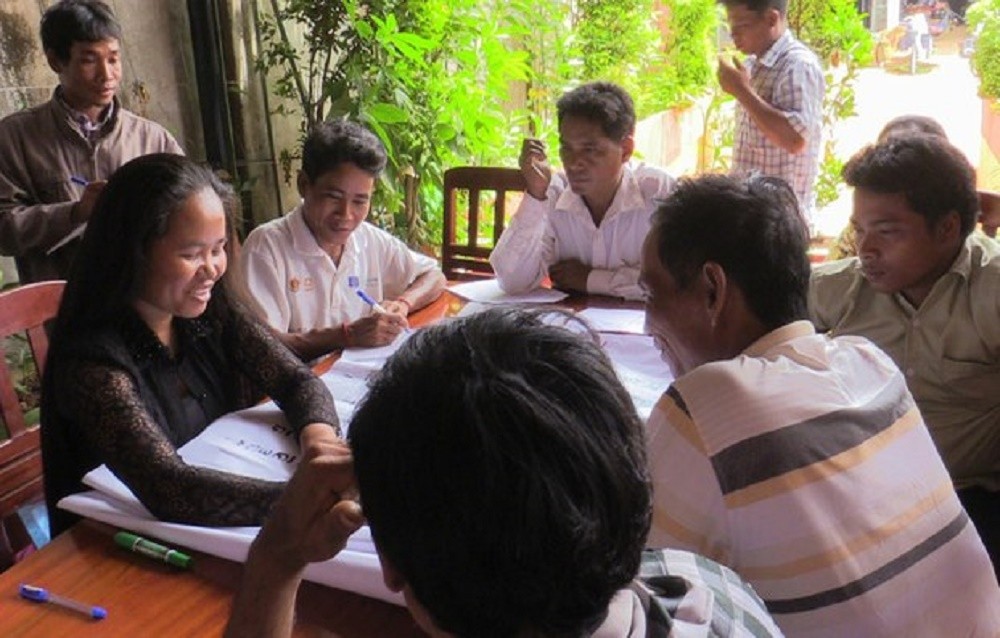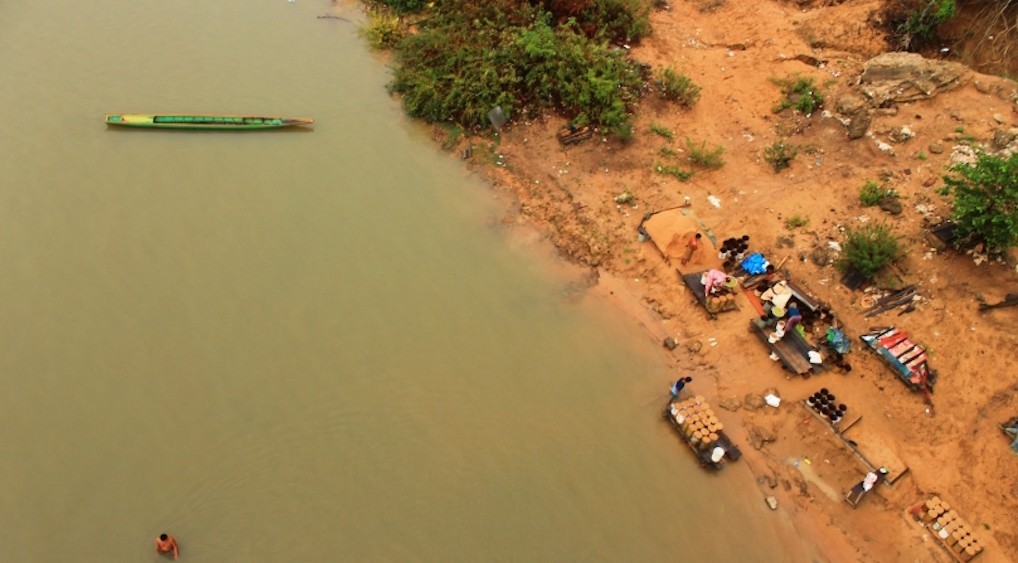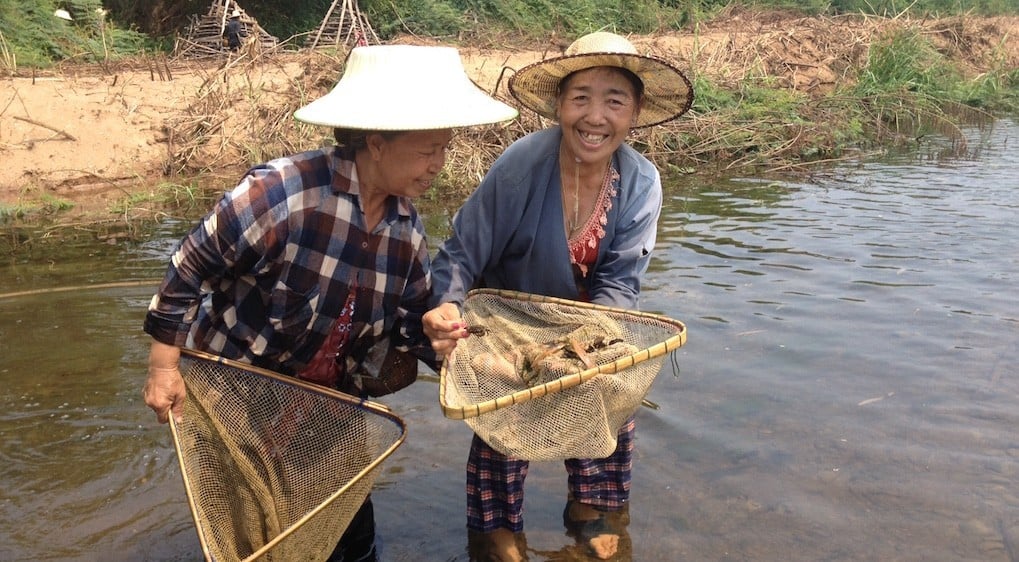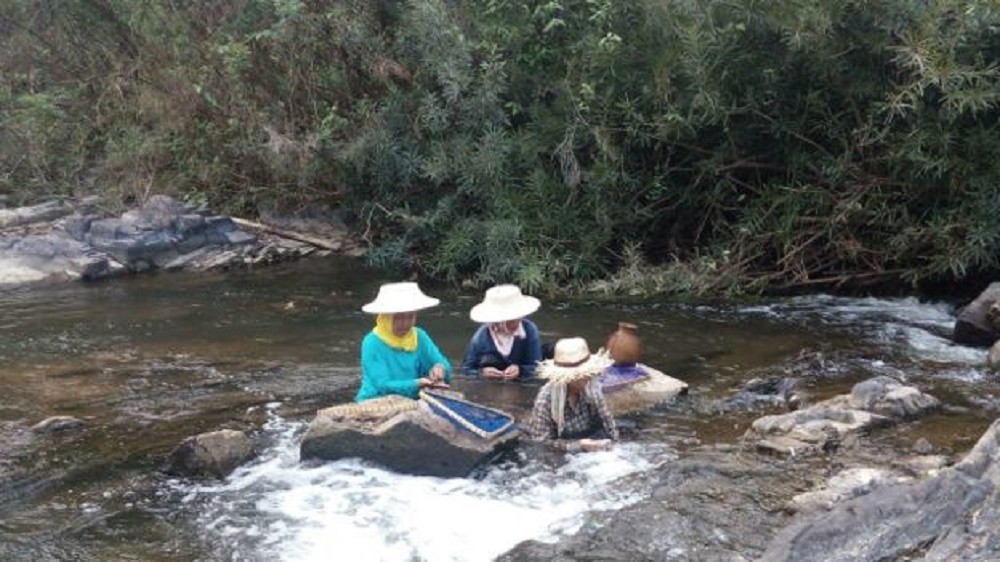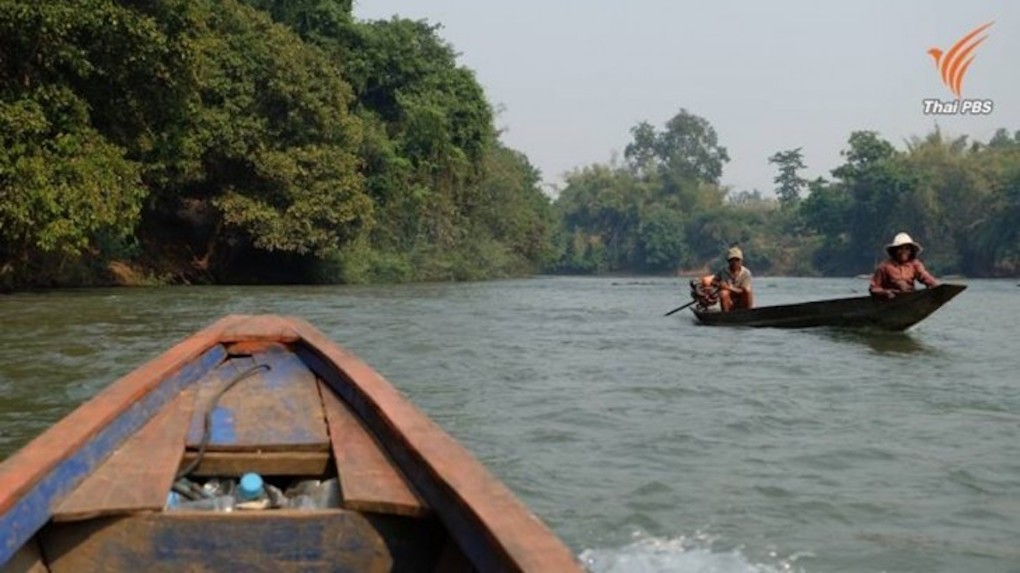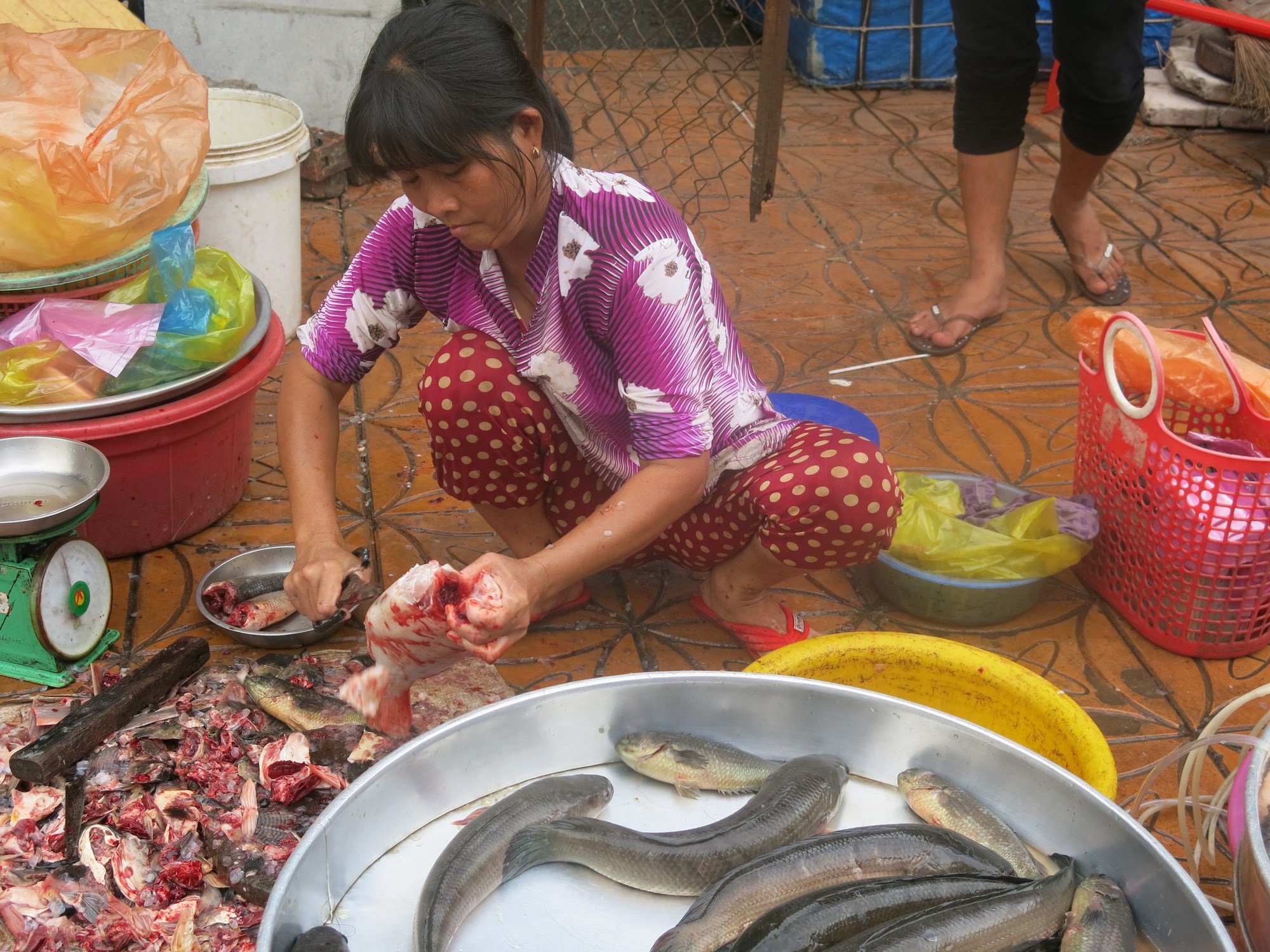Som Khamera Ouk Fishermen in Preah Romkel commune Tharaborivat district of Stung Treng province, Cambodia are concerned that their livelihood will be harmed because of Don Sahon hydropower dam construction. This dam site is very close to Cambodia-Lao border – about 2km. Mr. Bun Thon is 44 years old and he is a member of eco-tourism committee in […]
Tag: society-community
Mining Activists from Three Provinces Discuss Advocacy
About 30 Community Mining Focal People (CMFP) from Mondolkiri, Ratanakiri and Preah Vihear province gathered on June 14 2016 in Banlung town of Ratanakiri province to present and share their implementation of advocacy plans and updates about impacts of mining on local people.
Ms. Vong Socheat, a CMFP from Mondolkiri province said that one mining company has a license to mine and the company forced villagers to give farmlands to them because the farmlands are in the exploration or exploitation area of the company. She also said that local authorities have not paid attention to those issues, but they have forced local people to leave their farmlands as it belongs to the company.
Sun, Partnerships Power Thailand Solar Project
Sitting in the courtyard of his home in Lopburi Province, 180 kilometers north of Bangkok, Saichol Thanomsak remembers what life was like for the nearly 600 people in Moo 3 Village before Asia’s largest thin-film photovoltaic solar energy project moved in nearby. Land was not fertile and jobs were scarce, forcing breadwinners to seek employment elsewhere. For those who remained, life could be grim.
“The armed forces use nearby fields for firing practice and villagers would collect artillery shells for scrap metal,” he says. “Sometimes they blew up and there were many injuries. Today, we don’t have to take such risks. Our village benefits greatly from the solar plant. It has allowed so many of us to stay home and make a decent living.”
Saving the Salween: Southeast Asia’s last major undammed river
In a world of galloping hydro-power rapidly engulfing the developing world and new dams popping up in the Amazon, the Congo and along the Mekong, it is hard to find any important river left in the world, that has escaped unscathed and undammed.
The free-flowing Salween is the last important undammed river in East Asia, where endangered species including tigers and clouded leopards can still be found in remote parts of Myanmar’s ethnic Karen State.
From the snow-capped mountains of Tibet, the Salween rushes through steep gorges in Yunnan Province and flows through four of Myanmar’s ethnic states before emptying into the Andaman Sea.
US experts propose measures to address drought in Mekong Delta
Attending the event were Richard Cronin, Director of the Southeast Asia Program at the Stimson Center; Aaron Salzberg, Special Coordinator for Water Resources at the Bureau of Oceans, Environment, and Science Affairs at the Department of State; Todd Johnson, Forestry and Climate Change Advisor for USAID Asia’s Office of Technical Services; and Brian Eyler, Deputy Director of the Southeast Asia Program at the Stimson Center.
Panelists pointed out the main reasons for the most serious drought and saline intrusion in the past 100 years in the Mekong Delta.
Mekong dam projects ‘could destroy livelihoods, ecology’
THE ECOLOGY of the Mekong River could be destroyed within 10 years if dam projects along the river are allowed to continue, Thai and Cambodian non-government organisations have warned.
They have also warned that it will be very difficult for people to claim compensation for projects’ negative impacts on the environment and their livelihoods because it will be not difficult if not impossible to clearly link the effects to a particular dam.
Diverting the Mekong River into Thailand: The Khong-Loei-Chi-Mun project
Extensive irrigated agriculture in Northeast Thailand has long been a dream of the Royal Irrigation Department (RID). Over the decades, various visions have been expounded but never fulfilled, including the Green Isan Project in the early 1980s, the Khong-Chi-Mun Project in the late 1980s and 1990s, and the Water Grid Project in the early 2000s. Local communities and civil society have often challenged these projects, questioning the project’s economics and potential environmental and social impacts.
Recently, the RID has reinvigorated its irrigation plans through the “Mekong-Loei-Chi-Mun River Management and Diversion by Gravity in the Northeast” project. It entails diverting water from the Mekong River’s mainstream into the Loei River in Northeastern Thailand, which would then be connected via tunnels to the Chi and Mun Rivers.
Mekong Drought and Water War
Klang Village is located next to Loei river of Loei province, Thailand. In this area, there will be a project name Kong – Loei- Chi-Mun. This project aims to storage water for Thailand by dredging the Loei River further 5m deeply and spreading 250m wide of Loei estuaries. In addition, around 24 tunnels will be constructed at the bottom of the Loei river so there will more water volume from Mekong river flowing into Loei river, then to Chi and Mun river that help keep water for dry season in Thailand.
The head of Klang Village, Ms Sorarat Kaeswsa worried that if the river bottom is dredged, then there will be no fish anymore for their livelihoods. For many years their life has been based on this Loei river. The project director with the Thailand irrigation department, Ms Chawee Wongprasittiporn, said that the project will construct 1 to 2 tunnels first to see how water flows from the Mekong River to Loei River. Then they will decide about continuing construction or revising the plan.
Harnessing the Sesan River: An In-depth look at the Lower Sesan 2 Dam
A comprehensive investigation into the myriad of social, economic and environmental challenges facing communities along one of the Mekong’s most biologically and socially vibrant tributaries due to the Cambodian government’s determination to erect a major hydroelectric dam.
Harnessing Sesan river (Part 6): Dam and fish in Samse river basin
The image of fishermen casting fish nets from their small wooden boats while others throwing bits of catfish meat into the river before using small baskets made of bamboo to catch small fish has been a commonplace in Jalai islet in mid Mekong river in Satung Treng province.
Jalai islet is about 25 kms from the lower Sesan II dam. This is the passageway of fish species that swim upstream from Tonle Sap and the lower Mekong river for spawning in the upper Mekong river and its tributaries which include Sekong, Seprok and Sesan which altogether form the Samse river basin.


